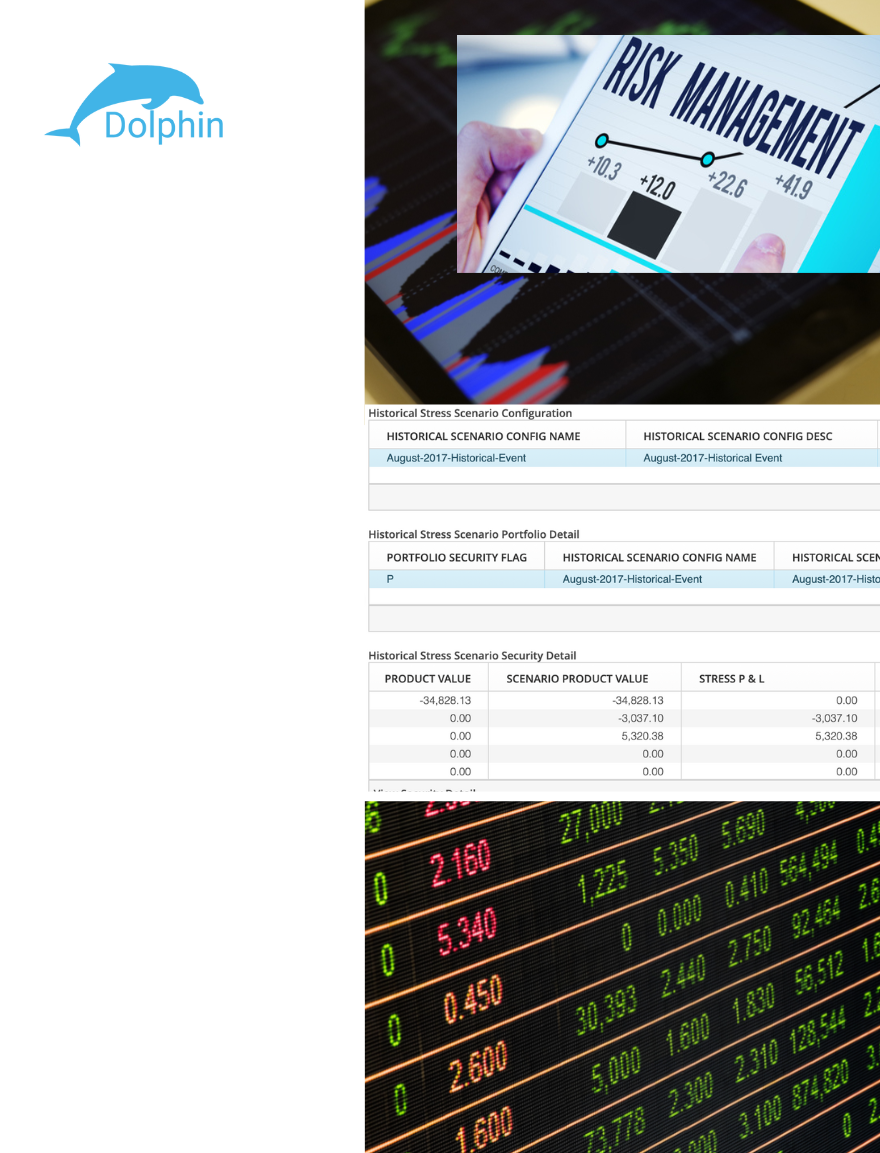Overview
Risk management using forward looking (Ex-Ante) analysis helps investment firms manage portfolio risks proactively and ensures right positioning of the portfolio under its investment policy guidelines.
Advances in technology and use of modern architecture has enabled firms to calculate such complex calculations more efficiently and faster thus the demand from managers and investors for ‘real-time’ risk.
Popular forward looking risk techniques include:
– Value At Risk (VaR) Analysis
– Liquidity Analysis
– Scenario Analysis and Stress Testing and
– What-If Analysis
This together with Ex-post risk measures will provide a more complete view of portfolio risk.
Enabling model transparency, providing for using custom models and making Risk analytics easier to use and understand are some of the other key challenges faced by buy-side firms.
THE NEED FOR RISK ANALYTICS
PROBLEM
Using the term ‘Risk’ and the need for it is not something that investors worry about when the overall market is doing well. However, as most savvy investors and risk managers know, ‘Risk’ is always present and needs to be understood to better manage the portfolio during both good and bad times.
More recently, regulators have mandated the need for key risk analytics to be reported by registered funds and still it is one of the many ‘back-office’ only ‘to-do’ for regulations.
Conversations around ‘risk’ with wealth clients is difficult as it needs to be explained in simple easy-to-understand terms. Not only the specific numbers, but collectively what it means in the portfolio’s context becomes very important.
Given the changing demographics for the wealth management clients, i.e. the younger generation that are more tech savvy, I think strategy for this simplified version probably needs to be crafted now and the sooner the better for the advisor firm.
On the institutional side, the challenge may not be on whether the ‘risk’ capability is there – it is around whether there is the right technology to get answers to clients in real-time.
Investors and managers demand for access to portfolio data and the need for real-time portfolio analysis is driving the need for providing a more comprehensive view of risk that not only include backward looking(ex-post) but also forward looking (ex-ante) risk analytics.
In addition to access to risk analytics for users to not only be made available for access to users it should also be made easier to understand by eliminating jargon and demonstrating each analytics applicability in the portfolio context,
Technology advances including the adoption of ‘cloud architecture’ in financial firms has only helped speed up the demand for such capability for both portfolio managers and users.
APPROACH
Open architecture, adoption of cloud technology and data integration using API
Pay-per-use model adoption using container technology
Transparency , custom models
TARGET MARKET
Administrator, hedge fund managers, multi-asset portfolio managers
Believe in enabling pay-per-use model for operations
Already have a roadmap to adopt modern ‘cloud’ architecture if using legacy systems
KEY FEATURES
Value at Risk (VaR) Analysis
Historical, Parametric, Undiversified, Marginal and Component VaR. Backtesting VaR
Liquidity Analysis
Analysis of Portfolio Liquidity for various redemption/market volume scenarios
What-If Analysis
Run What-If scenarios by simulating adding/deleting portfolio positions.
Scenario Analysis
Historical Scenario Analysis i.e. Covid-19, 9/11, 2007 financial crisis, etc.
Stress Testing
Shock scenario analysis for one or more risk factors such as price, fx rates, interest rates, etc.
Sensitivity Analysis
Interest Rate Sesnsitivities for Fixed Income/Swaps: PV01, DV01,Credit Spread (CS01), etc.
Look through Analysis
For Derivative & Fund/ETF Portfolios – the ability to perform analytics/risk on underlying securities of portfolio

Exposure, EaR and EvE Analysis
Actual exposure to a security i.e. for when using derivatives, Earnings At Risk (EaR) and Economic Value of Equity (EvE)

Ex-Post Analytics
Tracking Error, Jensen Alpha, Sharpe/Treynor/Sortino/Information Ratio, M Squared, Skewness, Kurtosis, Active Share, etc.
Security Analytics
Duration, Convexity, Yield To Maturity and other FixedIncome Analytics – the ability to perform analytics/risk on underlying securities of portfolio
SUPPORTED INSTRUMENTS
FIXED INCOME
- Fixed Rate Bonds
- Floating Rate Notes (FRN)
- Discount Instruments (T-Bills / Zero Coupon Bonds)
- Interest at Maturity Instruments (IAM)
- Certificates of Deposit (Commercial Paper)
- Negotiable Certificates of Deposit (NCD)
- Inflation Linked Bond(ILB)
LISTED DERIVATIVES
- Equity Future
- Equity Index Future
- Equity Index Future With Constituents
- Commodity Future
- Currency Future
- Bond Future
- Bond Index Future
- Bond Index Future With Constituents
- Equity Option
- Equity Futures Option
- Equity Index Future Option With Constituents
- Equity Index Future Option
- Currency Future Option
- Bond Future Option
OTC DERIVATIVES
- FX Forward
- CFD
- Vanilla Swap – IRS Fixed-Float
- Vanilla Swap – IRS Fixed-Float – Margined
- Forward Rate Agreement (FRA)
- Forward Rate Agreement (FRA) Margined
ALTERNATIVE INVESTMENTS
- Long/Short Equity
- Distressed Debt
- Private Equity
- Real-Estate
- Managed Futures
- Senior Secured Loans
- Event-Driven Credit
- Venture Capital
FUND
- Mutual Fund
- Exchange Traded Fund (ETF)
EQUITY
- Common Stock
- Warrants
- Rights
FAQ
Here are some answers to Frequently Asked Questions.

How is the integration done with existing client data?
Using real-time API’s to get Holdings, Reference and Market data from existing client data management system i.e from IBOR/ABOR.
Can we use the same market data as used by client's IBOR/ABOR?
Integration of all necessary market data is through client’s existing data management system. Therefore same data used for performance accounting will be used for calculating risk analytics.
Also, if required system can integrate with client’s Bloomberg/Reuters or EDI data sources using API. he client’s market data license will need to be used.
How does real-time Risk Analytics work?
As the integration with data management system is using API, users can use the Vega’s ‘Dolphin’ Risk solution’s web user interface to make a calculation request.
Upon request necessary input data is obtained and calculations are performed in real-time.
What calculations/analytics are part of the Risk Module?
Please see features section about for all supported calculations/analytics












